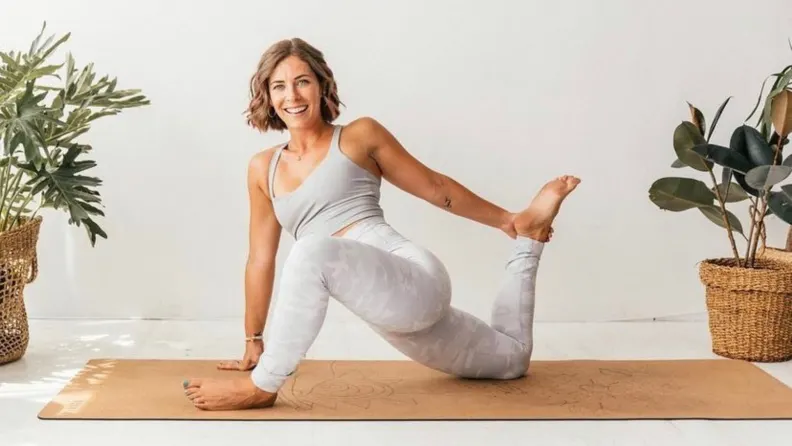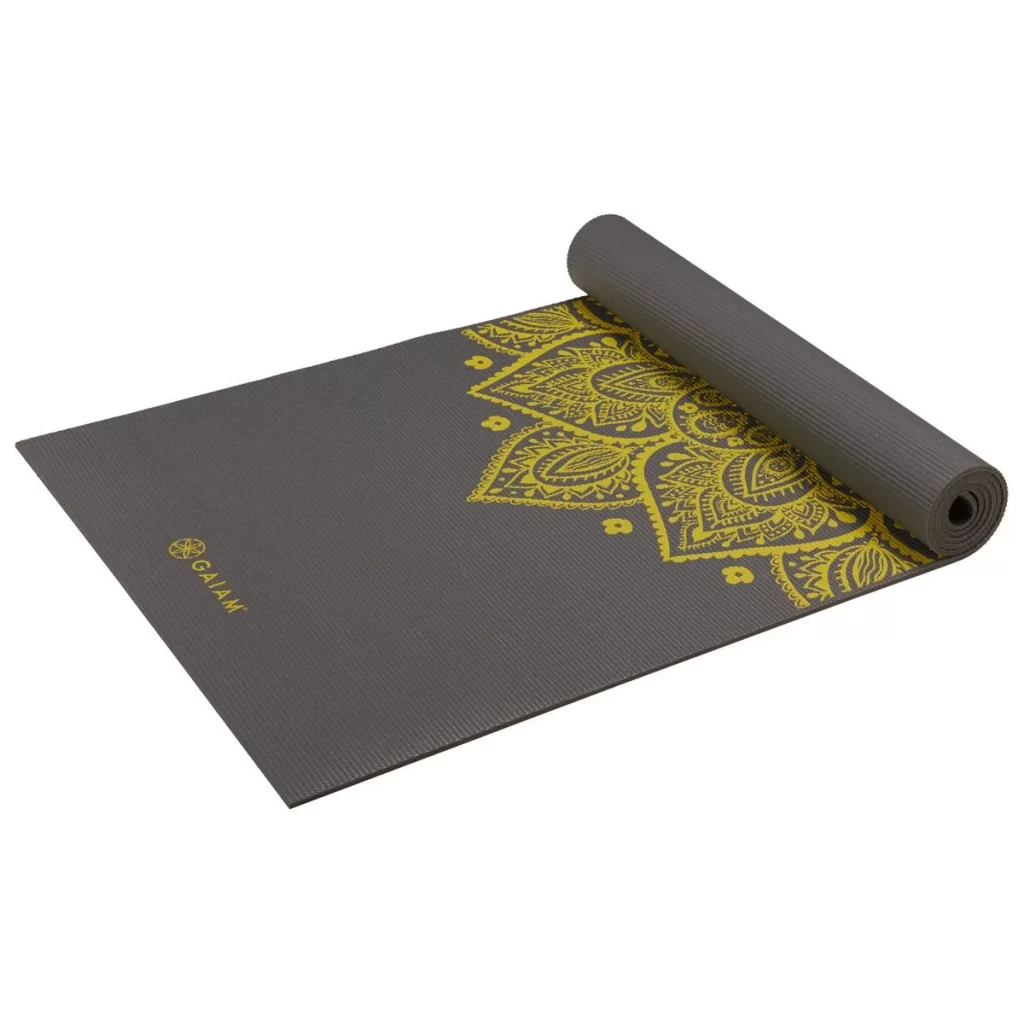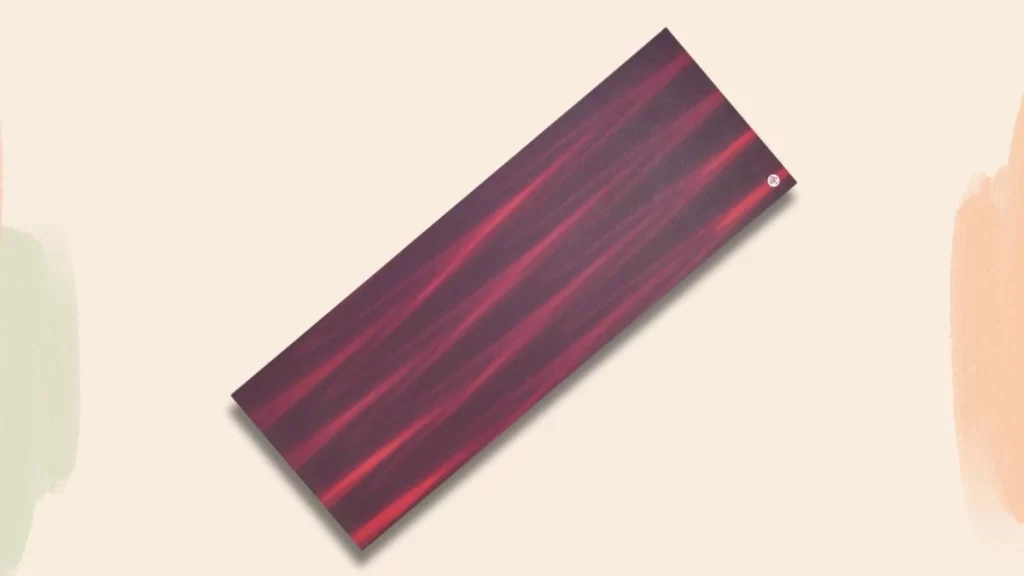Are Cork Yoga Mats Good for Hot Yoga? A Detailed Guide
Yoga mats come in all shapes, sizes, and materials – but if you practice hot yoga, you may be wondering if a cork yoga mat is a good option. With their natural, grippy surface and moisture-wicking abilities, cork mats have become increasingly popular for sweaty yoga sessions.

But are they really the best choice for your intense Bikram or other hot yoga class? Let’s dive into the pros and cons of using a cork yoga mat for hot yoga.
What Makes Cork a Great Yoga Mat Material
Cork is harvesting from the bark of the cork oak tree and is an incredibly sustainable material. It’s naturally antimicrobial and hypoallergenic, providing a safe, non-toxic surface for your yoga practice.
Unlike PVC or other synthetic yoga mats, cork is biodegradable and recyclable. As more yogis look for eco-friendly yoga products, cork has become a top choice.
Cork is also comfortable and supportive underfoot. Its slight springiness helps cushion your joints while holding stable poses. The textured surface provides an ideal grip, even during sweaty practices.
Let’s look at why cork makes an excellent yoga mat material:
- Sustainably sourced from cork oak trees
- Naturally antimicrobial and hypoallergenic
- Biodegradable and recyclable
- Provides cushion and stability for poses
- Textured surface creates ideal non-slip grip
With these qualities, it’s easy to see the appeal of cork for hot yoga and other sweat-inducing practices. Next, let’s look at some of the top cork yoga mat brands.
Top Cork Yoga Mat Brands
Several reputable yoga companies now offer cork mats. Here are some of the best yoga mat brands to consider:
Gaiam Cork Yoga Mat
One of the most popular cork mats, the Gaiam measures 68” x 24” x 3/16” and is lightweight at just over 4 lbs. It’s made from sustainably harvested cork with a natural rubber backing.

Reviewers praise its non-slip grip and cushioning support. It also comes at an affordable price point, making it a great entry-level cork mat.
YOLI Ego Cork Yoga Mat
On the higher end, the YOLI Ego is a performance cork yoga mat. At 72″ x 26″, it provides ample space for all poses. With two layers of 3mm cork, it offers superb cushioning and joint support.
The moisture-wicking surface and antimicrobial cork help prevent odors and bacteria growth. It’s a great choice for more advanced yogis.
Manduka PRO Cork Yoga Mat
Known for its exceptional quality, the Manduka PRO cork mat provides 6mm of plush cushioning. Its dot texture keeps you stable in sweaty classes while the durable natural rubber base ensures longevity.

While expensive, fans say the Manduka PRO is worth it for its unparalleled performance. It’s ideal for daily yoga and intense practices.
Yoga Design Lab Combo Cork Mat
This 5mm mat from Yoga Design Lab features a top layer of biodegradable natural cork and a natural rubber base. With two textures, the unique combo mat provides cushioning while keeping you grippy.
It’s sustainably made in the USA and is thicker than many cork mats. Reviewers describe it as “the perfect yoga mat.”
Is Cork Good for Hot Yoga?
Now we’ve covered the basics of cork yoga mats. But the big question remains – how well does cork perform for hot yoga and other sweat-inducing styles? Let’s go over the key factors:
Grip
Cork’s naturally grippy texture helps prevent sliding and slipping during sweaty practices. The textured surface “grabs” your hands and feet, while rubber mats can get slick. Cork provides noticeably better grip when wet.
Cushioning
Extra padding makes a difference for joints and sensitive areas in barefoot classes. Cork’s natural springiness offers more cushioning than most standard mats. This helps reduce knee and joint pain on hard studio floors.
Odor Resistance
Cork contains Suberin, a natural wax found in all cork plants. This waxy substance makes cork naturally antimicrobial, preventing bacteria and odors. Cork won’t trap smells from sweaty hot yoga sessions.
Eco-Friendly
Synthetic rubber and PVC mats wear out and end up in landfills. Sustainable cork biodegrades fully, making it the better environmental choice. It’s also harvested without harming cork oak trees.
Moisture-Wicking
Cork’s closed-cell structure resists absorbing liquids. It naturally wicks moisture and dries faster than other materials. Excess sweat won’t pool on the surface, preventing slips.
Durability
Cork yoga mats are surprisingly durable, outlasting lower-quality foam and rubber mats. With proper care, a quality cork mat will last through regular hot yoga and heavy studio use without flattening.
Easy to Clean
You just need soap, water, and a cloth to clean cork. It won’t degrade or delaminate when washed. Let your cork mat air dry fully before using to prevent mildew.
Potential Drawbacks of Cork Yoga Mats
However, cork isn’t perfect for every yogi’s needs. Here are a few potential disadvantages to consider:
- Price – Quality cork mats are more expensive than basic PVC and rubber mats. Budget yogis may want to opt for a more affordable mat.
- Thickness – Most cork mats are 3-5mm thick. If you prefer extra-thick padding, you’ll need to add a separate yoga mat towel.
- Weight – Dense cork is heavier than rubber or foam mats. If you’ll be traveling to classes, weight may be a concern.
- Smell – Some new cork mats have an natural odor at first. Let yours air out before your first hot yoga class.
- Absorption – Although moisture-resistant, cork can absorb sweat over time. Be sure to fully dry your mat between uses.
While cork has many advantages, it may not suit every yogi’s preferences. Consider your budget, yoga style, and needs when deciding if paying more for a cork mat is worthwhile.
Cork Yoga Mat Recommendations for Hot Yoga
Here are my top recommendations if you’re looking for the best cork yoga mat for hot yoga and other sweaty practices:
Gaiam Performance Cork Yoga Mat
With 5mm of cushioning and moisture-wicking cork, the Gaiam Performance Mat is purpose-built for hot yoga. It strikes the perfect balance of grip, support, and value.
YOLI Ego Cork Yoga Mat
The dual-layer Ego Mat provides plush 6mm padding and premium performance. Its antimicrobial finish prevents odors while the grippy texture keeps you stable in challenging poses.
Yoga Design Lab Combo Cork Mat
Featuring a durable natural rubber base and moisture-wicking cork upper, the combo mat is ideal for hot classes. 5mm thickness gives joints relief even on hard floors.
Jade Harmony Professional Cork Yoga Mat
Jade Yoga’s pro cork mat contains 4mm of sustainably sourced cork for the right amount of cushion and grip. Its open-cell design absorbs very little sweat while resisting odors.
Best Practices for Using a Cork Yoga Mat
To keep your cork mat performing its best, follow these care tips:
- Allow the mat to fully air dry after sweaty yoga sessions before rolling up. This prevents mildew and odors.
- Wash occasionally with a damp, gentle cloth and mild soap. Avoid harsh cleaners.
- Check the bottom rubber periodically for cracks – this can cause sliding.
- Break your mat in gradually to avoid flattening. Allow the cork to fully expand.
- Consider using a towel for extra padding and sweat absorption during hot classes.
- Bring your own spray bottle to re-wet your mat during class when needed.
With proper care, a quality cork yoga mat should provide a safe, grippy, sustainable surface for many hot yoga and Bikram sessions to come. Have you tried practicing on a cork yoga mat? Let us know your experience in the comments!
Are Cork Mats Good for Hot Yoga?
- Cork provides excellent grip, cushioning, and moisture-wicking for hot yoga.
- The naturally antimicrobial material resists odors and bacteria growth.
- Cork is eco-friendly and sustainable compared to rubber and PVC mats.
- Potential drawbacks include higher cost and weight.
- Look for a 5-6mm thick cork mat with moisture-wicking finish.
- Allow cork mats to fully dry between uses and wash occasionally with mild soap.
- Cork performs very well for hot yoga and is a smart eco-choice.
How to care for a cork yoga mat
To care for your cork yoga mat, follow these tips:
- Wipe down your mat with a damp cloth after each use.
- If your mat gets very sweaty, you can wash it with a mild soap and water.
- Let your mat air dry completely before storing it.
- Avoid storing your mat in direct sunlight or in humid conditions.
FAQs
Are cork yoga mats non-slip?
Yes, cork yoga mats are naturally grippy, even when wet. This makes them a great option for hot yoga.
Are cork yoga mats good for your joints?
Cork yoga mats are soft and supportive, making them a good option for people with joint problems.
How long do cork yoga mats last?
Cork yoga mats are very durable and can last for many years with proper care.
Are cork yoga mats sustainable?
Yes, cork yoga mats are made from a sustainable and renewable resource.
Why is the cork yoga mat considered the best for hot yoga?
The best cork yoga mat offers exceptional grip, especially during sweaty yoga sessions. Its surface becomes more adhesive when wet, making it great for hot yoga. The natural cork material is also extremely durable and provides a comfortable surface for practicing various types of yoga.
How is a cork yoga mat made, and what materials are used?
A cork yoga mat is made from the bark of cork oak trees. The cork material is harvested sustainably, ensuring the cork oak tree remains unharmed. The natural cork surface is then attached to a backing, often made of rubber, to create a sturdy and durable practice yoga mat.
Are cork yoga mats better than standard PVC mats?
Many believe cork yoga mats are better than rubber or PVC mats, especially for hot yoga sessions. Cork is naturally anti-microbial, repels dust and moisture, and offers a superior grip when wet. Additionally, cork yoga mats are eco-friendly, as cork is a sustainable and biodegradable material.
What makes the Gaiam cork yoga mat a popular choice?
The Gaiam cork yoga mat is known for its durability, performance, and eco-friendliness. It offers a natural cork surface that provides excellent grip during yoga sessions, and its performance is especially noteworthy during sweaty yoga, making it a top choice for many practitioners.
Can I use cork yoga blocks along with my cork yoga mat?
Absolutely! Using cork yoga blocks along with your cork yoga mat can enhance your yoga practice. Cork yoga blocks are sturdy and offer excellent support, complementing the benefits of a cork yoga mat. Brands like Yoloha Yoga and Body by Yoga offer cork products that work well together.
Is the thickness of a cork yoga mat important?
Yes, the thickness of a cork yoga mat is crucial for comfort and stability. A 4mm thick yoga mat is a popular choice as it offers a balance between cushioning and firmness. Those with joint issues might prefer a thicker mat for added support.
How do cork yoga mats compare with Lululemon mats?
While Lululemon mats are known for their quality and durability, cork yoga mats offer unique benefits such as being eco-friendly, providing superior grip during sweaty sessions, and being anti-microbial. The choice between the two depends on individual preferences and values.
Conclusion
Cork yoga mats are a great option for hot yoga because they are naturally grippy, moisture-wicking, and antimicrobial. They are also sustainable and durable. If you are looking for a new yoga mat, consider a cork yoga mat.






